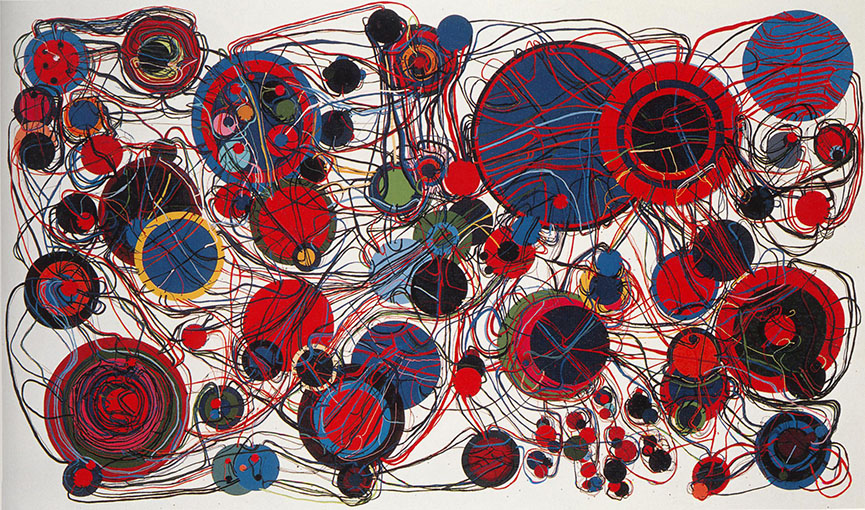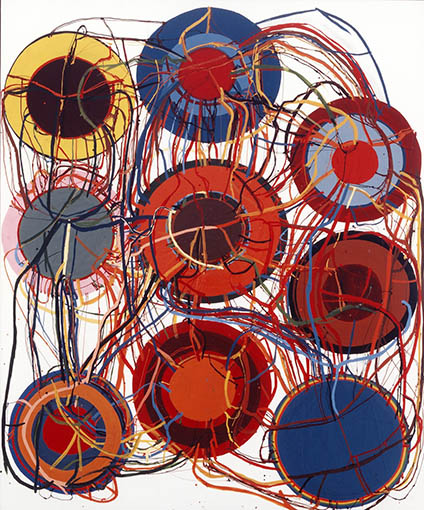
[Audio Guide]
Red, blue, yellow, and black circles are layered on top of one another, connected by numerous lines stretching out in every direction. It is said that this composition was born from the lightbulbs and cords of her 1956 work, Electric Dress. The work was a unique piece—a light-up piece of clothing made from flickering lightbulbs andfluorescent tubes that could be worn as the wearer moved. The present work is derived from this idea, with the circles as the lightbulbs, and the lines connecting them as the electric cords. The jostling of the differently sized circles generates a kind of energy, and the numerous lines extending from them increase this energy and transmit it. The unbalanced placement of the circles and the use of color gives rise to humor, and the multiplicity of lines tying the circles together creates a turbulent energy through the exchanges of intense electricity. Painted with glossy plastic enamel pigments, this painting is nothing but energy.

[Audio Guide]
Atsuko Tanaka’s paintings are invariably composed of various circles of different sizes connected by haphazard lines. The assorted circles are painted with smooth, lustrous enamel pigments, and innumerable lines extending from these circles give the sense of energy being created and a strange, generative power. No two of the circles are the same, and the bold colors used for both the circles and the lines convey a playful rhythm and a carefree attitude. Before mounting her work onto frames, Tanaka puts the canvases on the floor, and by positioning herself over the painting surface she uses her whole body to draw lines in the pigment. For Tanaka, the physical connection between the picture plane and her body is of the utmost importance. Standing before the paintings, the viewer can sense of the artist’s energy and presence.